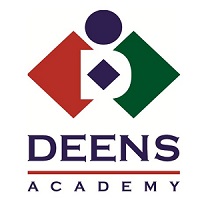MIDDLE SCHOOL ( Grade 6-8)
We have created an in-house curriculum for the middle school, comprising Grades VI to VIII. Our curriculum, during these crucial years in a child’s life, is geared towards facilitating a meaningful and happy transition into adolescence. Beyond lesson plans and tests, the syllabus also focuses on empowering students with knowledge, self-awareness and self-confidence.
Academics
The Curriculum for Middle school includes:-
- Languages- 1st Language and Medium of education: English
- 2nd and 3rd language options are as follows
| Grades | 2nd language + 3rd language combination |
| 1-4 | Hindi + Kaddaya Kannada |
| Kannada + Elective Hindi | |
| 5-8 | Hindi + Kaddaya Kannada |
| Kannada + Elective Hindi | |
| French + Kaddaya Kannada | |
| Urdu + Kaddaya Kannada | |
| Sanskrit + Kaddaya Kannada | |
| 9-10 | Hindi |
| Kannada | |
| French | |
| Urdu | |
| Sanskrit |
- Social studies (SSt: Geography, History, Civics)
- Science( Biology, Chemistry and Physics)
- Mathematics
Classroom
A typical classroom at Primary section at Deens is a vibrant and enriched learning space. What strikes you at first glance is that our class sizes are intimate – restricted to a small group of 30 students and 5 sections.
Every day begins with circle time: Here the teacher discusses with the children Life skills and values which need to be reinforced time and again to ensure good behaviour and attitude in children.
Assessments
At Deens Academy, we follow a system of continuous multi-disciplinary assessment, which could be formal or informal. We also follow a differentiated system of assessment to cater to the varied needs of children.
The child seeking entry into Deens is evaluated on his/her skills and abilities in order to determine the level in comparison to the expectation of the class into which admission is sought. This helps the teacher to modulate the classroom transaction in order to meet the child’s needs.
With the firm belief that education touches the mind as well as the being and each influences the other, information regarding each student is collected, taking into account their ability to apply knowledge, their learning process and how they conduct themselves in different situations. These findings form the basis of a continuous feedback process to the student and parents. A systematic follow up programme is built around these evaluations, be it on the academic, co-scholastic or value/attitudinal front.
Formative assessments are marked on varied tasks within a class, homework, class work, projects, presentations- each of which lends to assessment, projecting a different aspect of the child’s learning. We follow the CBSE pattern of cycle reviews, one formative assessments in each term and a summative assessment at the end of every term ( September SA1 and March SA2). A brief description of the portions covered and marking scheme is as follows
Term 1 -100 marks |
Term 2-100 marks |
||||||
June-august |
September |
October- February |
March |
||||
Review 1-40 marks |
NotebookAnd class test – 5 marks |
Subject enrichment project-5 marks |
Half yearly – 80 marks |
Review 1-40 marks |
NotebookAnd class test – 5 marks |
Subject enrichment project-5 marks |
Final Exam – 80 marks |
Full Portion ( Completed Till Date ) |
Full Portion (After Half yearly) |
||||||
Full Portion( Completed Till Date ) |
Full Portion( Completed Till Date ) |
Portions which is completed after Half Yearly |
Full portion of second term + 50% portion of 1st term |
||||
The school year is divided into 2 terms for grade 6-8.
The marks are published on the student ERP page. The students of grade 1-10 are evaluated by a 9 point grading system. Each grade, given on the basis of both formative and summative assessments will correspond to the range of marks indicated below:
| grade | A1 | A2 | B1 | B2 | C1 | C2 | D | E1 | E2 |
| marks | 91-100 | 81-91 | 71-80 | 61-70 | 51-60 | 41-50 | 33-40 | 22-32 | 0-21 |
 Gunjur – Deens Academy | Route to Excellence Route to Excellence
Gunjur – Deens Academy | Route to Excellence Route to Excellence

